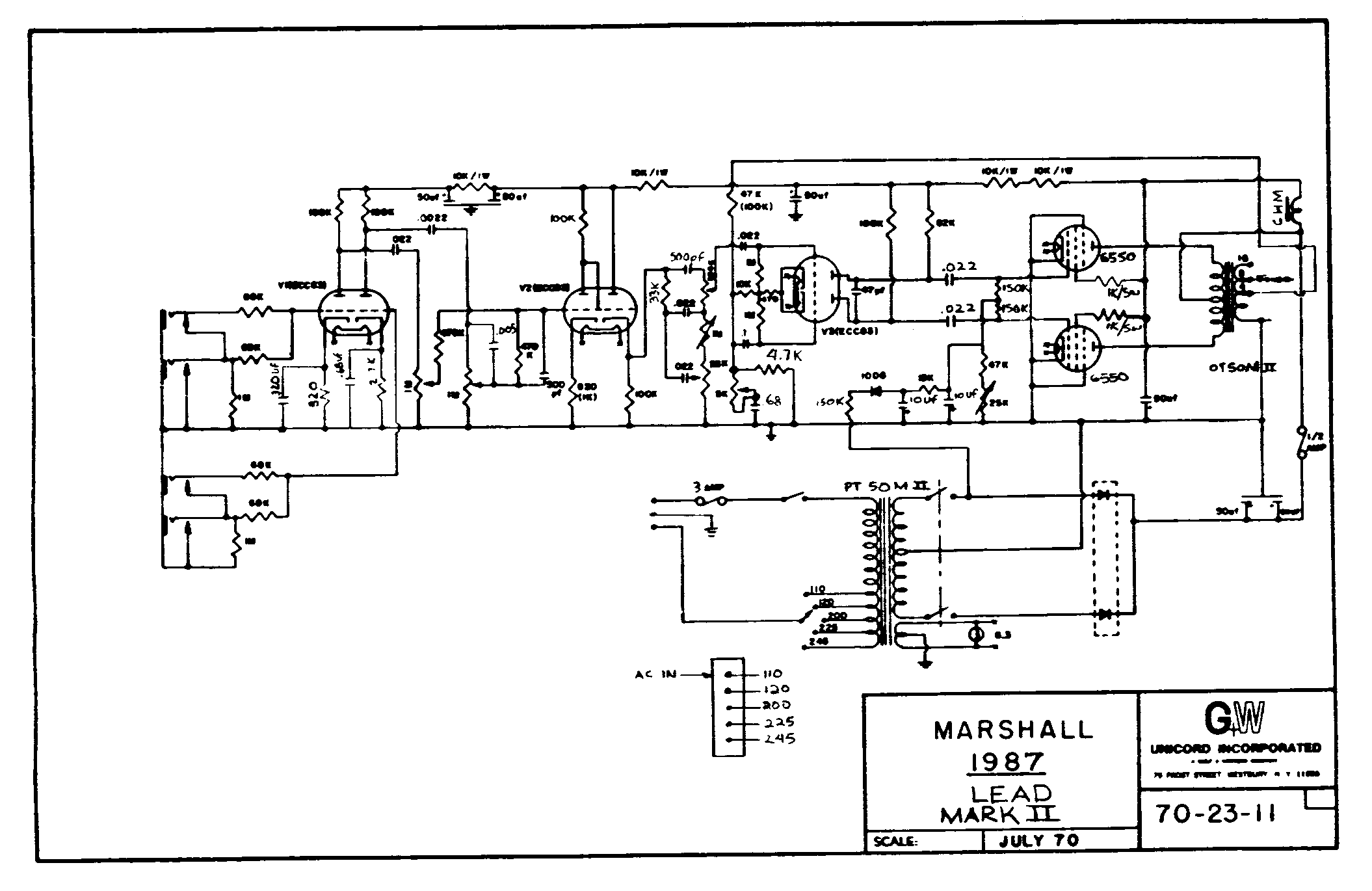While it may sound like heresy, the power tubes have very little to do with the harmonic complexity of an overdriven guitar poweramp, as most of the harmonic content is generated by the phase inverter, which clips asymmetrically under heavy load. A Marshall 1987 50W JMP amp and a Tweed Bassman have the same basic circuit topology, as they are both based on the 5F6-A tweed circuit. A lot of people will point to the use of EL34 tubes being pushed into distortion that differentiates the Marshall sound from the Tweed Bassman. However, the truth is that while they share the same circuit topology, they do not share the same voicing. The power tubes help, but it is the difference in interstage coupling and a better power supply that makes these amps sound different.
5F6-A Tweed Bassman Circuit
Marshall 1987 Schematic

As I mentioned, the circuits are basically identical from a topology point of view; namely, gain stage, volume pot, gain stage, cathode follower, tone stack, phase inverter, power tubes. One thing to note here is that this schematic is for a US export amp from the seventies. Marshall sent JMPs to the US with 6550s to increase reliability. That being said, what really makes this amp sound different is capacitance. For one, the cathodes on the bright and normal channel input gain stages are tied to the same cathode resistor and cathode bypass capacitor on the base 5F6-A circuit whereas they each have their own cathode resistor and bypass capacitor on the 1987 circuit. The bright channel on the 1987 has a 2.7K cathode resistor and a 0.68uF bypass cap. This change alters the bias point and the frequency at which local negative feedback is decoupled. In effect, the gain above the RC time constant is boosted. The next difference is the use of a 0.0022 instead of 0.022 interstage coupling capacitor between gain stages 1 and 2 on the 1987's bright channel. Once again, the change exists to cut bass. Now, two interesting differences lie in the tone stack. The slope resistor has been reduced from 56K to 33K and the top capacitor has been increased from 250pF to 500pF. This change is an often overlooked part of the 1987 (50W JMP) and 1959 (100W JMP) circuits. It makes the tone stack more responsive to a guitar's voice by shifting midrange frequencies into the bass control. The final critical change are the coupling capacitors between the phase inverter and the output tubes. Marshall reduced this value from 0.1uF to 0.022uF, which reduces the amount of bass that is fed to the power tubes. These circuit changes coupled with more power supply capacitance and a silicon-rectified power supply are what are responsible for a JMP's in your face tone when cranked, not the power tubes.
That is not to say that power tubes do not contribute to the tone, everything in an amplifcationsystem affects tone. The EL34 and EL84 are a bit unique in the guitar amp world in that they are power pentodes (five element tubes) whereas almost all of the other power tubes are beam tetrodes (four element tubes with beam forming plates). Historically, the different designs were driven by a patent. Philips and Mullard were the first to solve secondary plate emission (basically electrons hitting the plate and bouncing off) by introducing what is known as the suppressor grid to a tetrode. Because this design was patented, EMI engineers came up with an alternative design that suppressed secondary emission via electron beam forming plates. The result was known as the "kinkless tetrode" (i.e., the KT in KT66), which is known today as a beam tetrode, or as my father used to say "beam tube" (my father was a practicing electronics technician from 1951 through 1994). The KT66 was originally manufactured by the Marconi-Osram Valve company, which was owned by EMI and GEC. Tube geometry affects frequency response.
With that said, what Marshall did was to lay the groundwork for a common practice in overdriven tone today; namely, cut bass before going into a gain stage and cut highs after exiting a stage is that is pushed into clipping. The main reason why the HXDA sounds so fat and juicy is due to the horrible frequency response of the Cinemag transformer, which acts like a low-pass filter that removes undesired higher order harmonics from the output signal (i.e., the harmonics that sound like angry bees or crushed glass).



